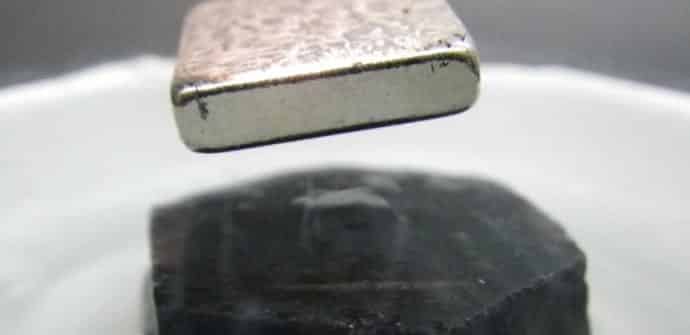Newly discovered properties of superconductivity could help scientists unlock it at room temperature
A team of physicists led by the University of Waterloo in Canada have made new findings that may ultimately lead to a theory of how superconductivity starts at the atomic level, and how it could help them work out how to accomplish this exotic state reliably in materials at room temperature.
Professor David Hawthorn, Professor Michel Gingras, doctoral student Andrew Achkar, and post-doctoral fellow Dr. Zhihao Hao from University of Waterloo’s Department of Physics and Astronomy have experimentally shown that electron clouds in superconducting materials can break into an aligned and directional order called nematicity.
“It has become apparent in the past few years that the electrons involved in superconductivity can form patterns, stripes or checkerboards, and exhibit different symmetries – aligning preferentially along one direction,” said Professor Hawthorn. “These patterns and symmetries have important consequences for superconductivity – they can compete, coexist or possibly even enhance superconductivity.”
Their results published in the journal Science, present the most direct experimental proof to date of electronic nematicity, as a universal feature in cuprate high-temperature superconductors.
Superconductivity, the ability of a material to conduct an electric current with zero resistance, is best described as an exotic state in high temperature superconductors.
The scientists used a unique technique called soft x-ray scattering at the Canadian Light Source synchrotron in Saskatoon to investigate electron scattering in specific layers in the cuprate crystalline structure. Specially, the individual cuprate (CuO2) planes, where electronic nematicity takes place, versus the crystalline distortions in between the CuO2 planes.
Those X-rays found electrons in the atoms of those crystals form patterns that may ultimately be related to how much superconductivity the crystals are capable of accomplishing. The patterns seem to be a key characteristic to this family of materials.
“That clearly has bearing on the big questions of superconductivity and how we might achieve a higher temperature superconductor,” said Hawthorn.
“If we could figure out a way to control it in some fashion, by engineering a particular crystal or particular pressure to the material, that might give us a knob to tune the strength of superconductivity and ultimately lead to a higher temperature superconductor.”
This is the first time anyone had tried this, and they found some exciting alignments happening, which they believe could be crucial to working out why the materials sometimes do or don’t achieve superconductivity at high temperatures.
“In this study, we identify some unexpected alignment of the electrons – a finding that is likely generic to the high temperature superconductors and in time may turn out be a key ingredient of the problem,” said Hawthorn.
Their observations also recommend that nematicity commonly occurs in all cuprates, once the temperature drops below a critical point.
The task now is to understand how nematicity relates to a phenomenon known as charge density wave fluctuations.
“Normally, the electrons are in a nice, uniform distribution, but charge-ordering can cause the electrons to bunch up, like ripples on a pond,” explained the University of Waterloo. “This sets up a competition, whereby the material is fluctuating between the superconducting and non-superconducting states until the temperature cools enough for the superconductivity to win.”
Hawthorn said the study also suggests those electron patterns and how they form or break up could throw light on simple questions of how materials act.
“We spend a lot of our time thinking about what would be the theory, the key ingredients that are going to describe what’s happening in these materials.
“That ends up being a tremendously challenging problem and a Nobel Prize-worthy problem. If somebody was able to come up with a theory for this problem, that is a Nobel Prize.”
It may essentially present another knob to tune in the pursuit to achieve the final goal of a room temperature superconductor, even though there is not yet an agreed upon explanation for why electronic nematicity occurs.
“Future work will tackle how electronic nematicity can be tuned, possibly to advantage, by modifying the crystalline structure,” says Hawthorn.
The research has been published in Science.
